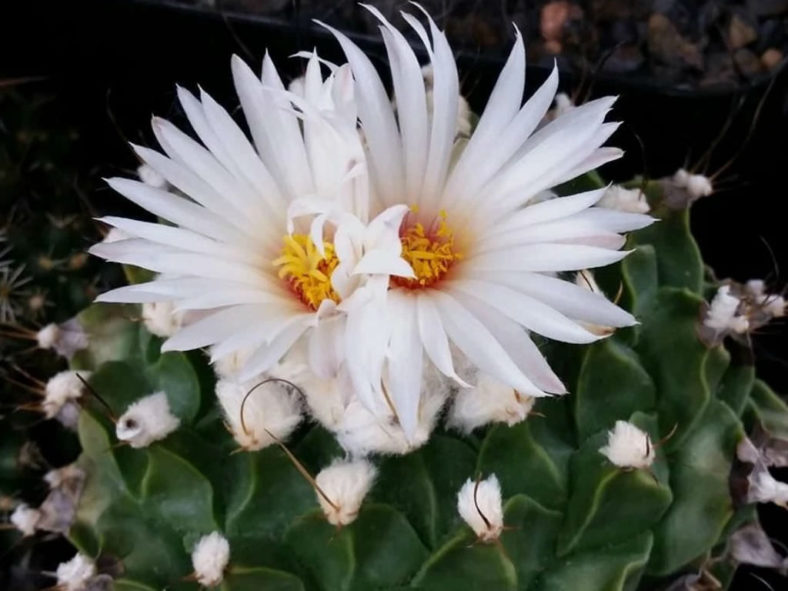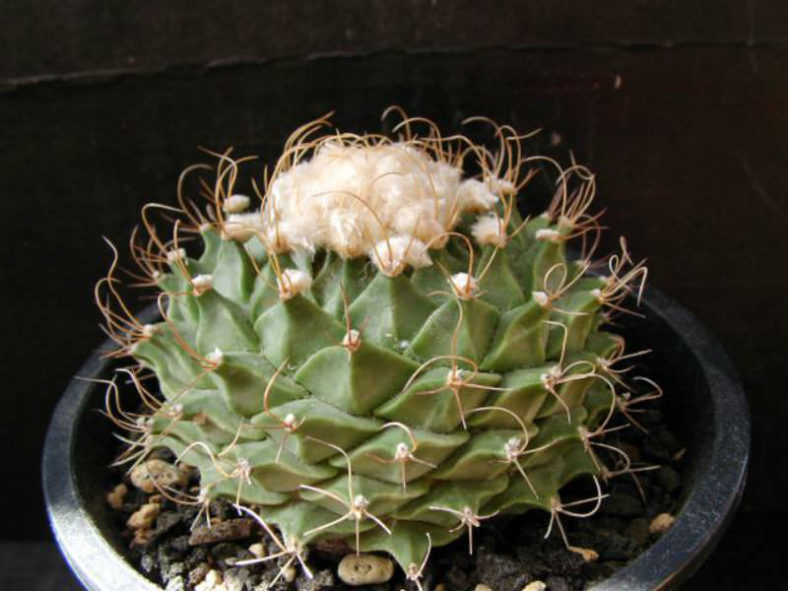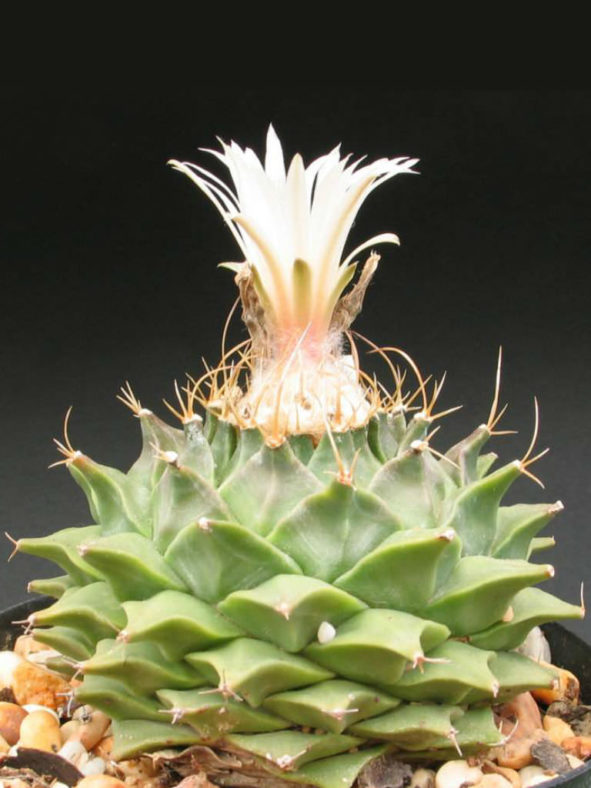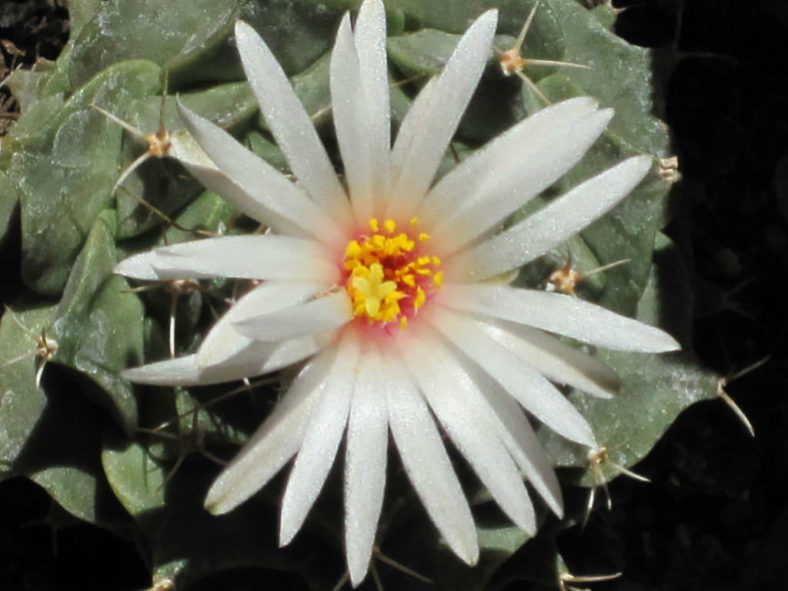Scientific Name
Obregonia denegrii Frič
Common Name(s)
Artichoke Cactus
Synonym(s)
Ariocarpus denegrii, Strombocactus denegrii
Scientific Classification
Family: Cactaceae
Subfamily: Cactoideae
Tribe: Cacteae
Genus: Obregonia
Etymology
The specific epithet "denegrii" (pronounced "deh-NEH-gree-eye") honors Ramon P. De Negri, who was the Minister of Agriculture of Mexico in 1923 when Alberto Vojtěch Frič, traveling through the state of Tamaulipas, with Ing. Marcello Castafieda, discovered this species in the Valley of Jaumave.
Origin
Obregonia denegrii is native to Mexico. It occurs at an altitude of about 1,000 meters above sea level.
Description
Obregonia denegrii is a small cactus with a squashed, globular, solitary stem with triangular, spirally arranged tubercles, resembling an inverted pine cone with a woolly apex. It is related to Ariocarpus and is the only representative of its monospecific genus. The stem is grayish-green to dark green and can grow up to 6 inches (15 cm) in diameter.
The flowers appear from the center of the dense, fuzzy wool at the apex in summer. They are diurnal, white, funnel-shaped, and can reach a diameter of 1 inch (2.5 cm). The fleshy, edible fruits are white, pear-shaped, and hidden in the wool.

Hardiness
USDA hardiness zones 9a to 11b: from 20°F (-6.7°C) to 50°F (10°C).
How to Grow and Care
This slow-growing cactus isn't always the easiest species to cultivate, but can enlarge relatively fast when well-grown. It is often seen as a grafted plant, but it grows very well on its roots.
It requires well-draining soil with minimal organic matter (such as peat or humus). Requires full sun to develop good compact growth, and watering should be rather infrequent to keep the plant flat-shaped and not become excessively elongated and unnatural in appearance. Use water sparingly from spring to fall and keep it perfectly dry in winter or at night when temperatures are below 50°F (10°C). It is hardy to 20°F (-6.7°C) for a short period; during the rest period, there is no high atmospheric humidity. Ensure good ventilation.
It is propagated almost exclusively by seeds. However, the seedlings are tiny and very slow-growing. Initially, they take one to two years to reach a diameter of 0.2 inches (0.5 cm).
Links
- Back to genus Obregonia
- Succupedia: Browse succulents by Scientific Name, Common Name, Genus, Family, USDA Hardiness Zone, Origin, or cacti by Genus
Photo Gallery
Click on a photo to see a larger version.


